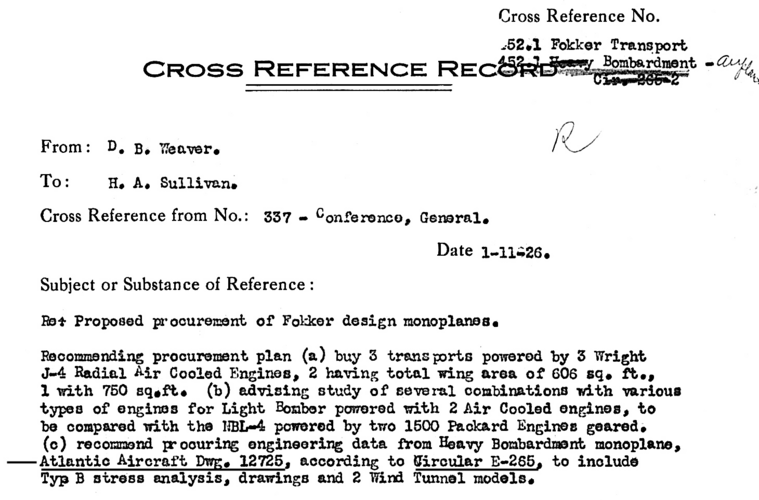The "Heavy Bombardment monoplane, Atlantic Aircraft" sounds like the projected Atlantic/Fokker XHB-2 in the "Heavy Bombardment" series, which was to have had two Packard 2A-2540 engines but was never built.
The rest of the discussion in the source seems like designations have been garbled, perhaps while writing from memory at a time when the USAAC designations were far from settled.
The "NBL" designation should stand for "Night Bombardment, Long Range". The only examples that I have heard of were the Witteman-Lewis (Barling) NBL-1 and the Martin NBL-2. There was also an "Night Bombardment, Short Range" series that did include a Curtiss NBS-4, but this was to be Liberty- rather than Packard-powered.
As far as I know, both the NBL and NBS category designations were obsolete by 1926, having been replaced by the equally short-lived LB ("Light Bombardment") and HB (Heavy Bombardment") designations.
In any case, the author speaks of comparing "Light Bomber"--LB--aircraft with air-cooled engines to the "NBL-4" aircraft with twin "1500 Packard" engines.
The Packard 1A-1500 engine of 1924 was unsuccessful and built in small numbers only. The 2A-2540 used in the HB-1 and the 3A-2500 were the only Packards aeroengines used in production quantities.
There was an Atlantic/Fokker monoplane in the "Light Bomber" series: the P&W-powered LB-2, derived from the F.VII but with two engines (
http://www.aerofiles.com/fok-XLB2.jpg). The Martin LB-4 was powered by P&W Hornet engines, as were the successful Huff-Daland/Keystone LB-3, -4, -5, -6, -7, -8, -9, and -12 aircraft. The only Packard-powered aircraft was the single-engined Huff-Daland LB-1.

